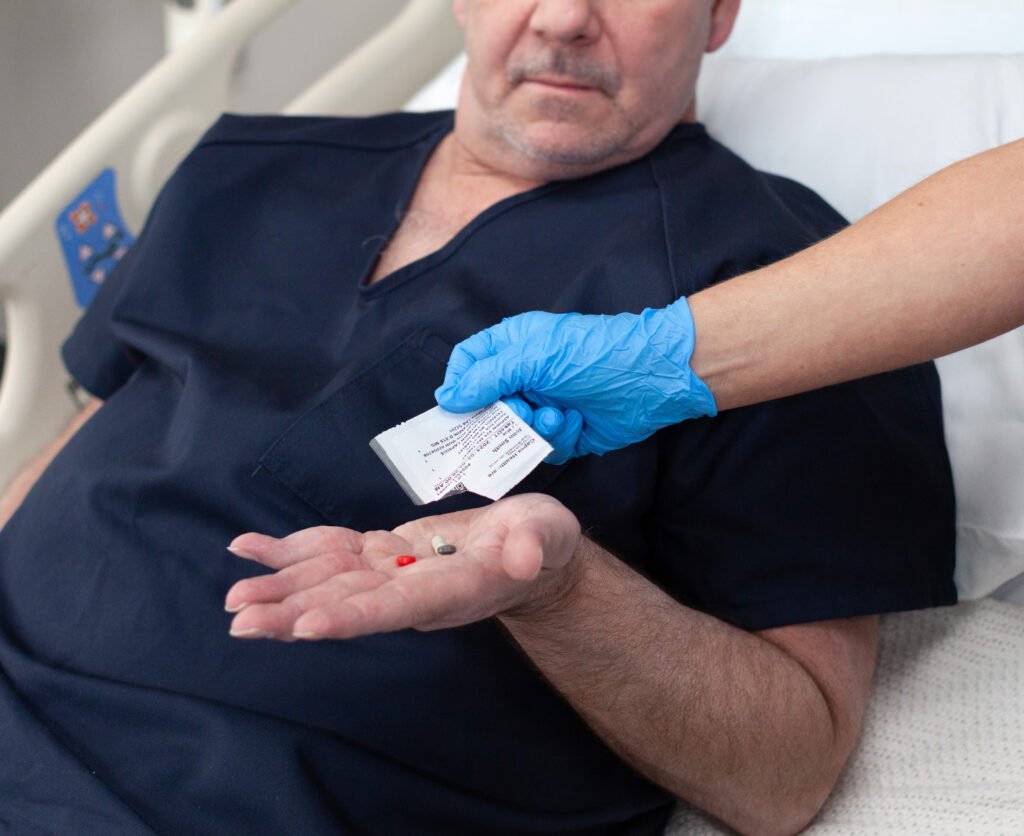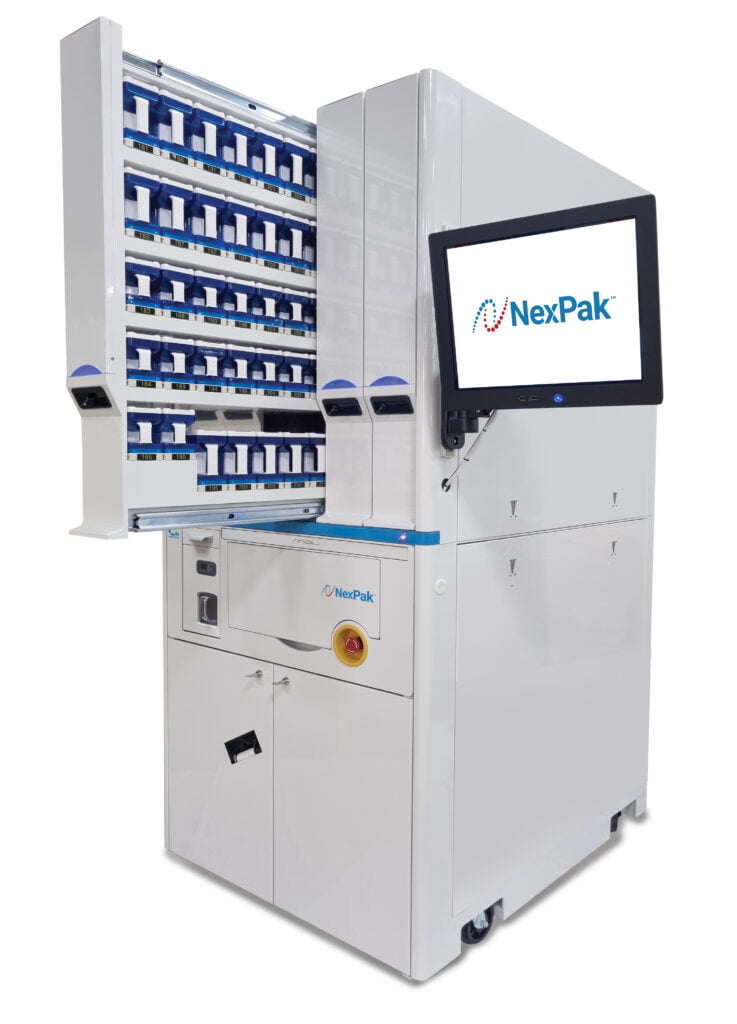
Medication delivery for post-acute patients and residents can take various forms, each with its own set of requirements and challenges. These include the effort needed to prepare medications in the pharmacy, the process of giving them to patients, the materials used, the possibility of wasting medication due to prescription changes, and the overall cost of the delivery system. This blog post explores the features and advantages of using automated strip packaging for medications, and how it compares to the traditional methods like blister packs or punch cards.
While punch cards are relatively low-cost and widely used for their simplicity, automated packaging is a modern technology that can significantly enhance the in-pharmacy packaging and dispensing processes. Automating the packaging of a post-acute patient’s daily medications addresses eliminating medication errors, reducing medication handling, speeding up dispensing, and lowering the risk of adverse events, even lawsuits.
Today’s post-acute patients can be treated for multiple chronic diseases requiring 24-hour care. These individuals are generally older and can take an average of 3 to 8 medications per day (even higher in some skilled care settings). Without safeguards, including automated packaging, managing these patients’ medication regimens can be difficult, time-consuming, and error-prone.
A long-term care pharmacy automated strip packaging system is designed to efficiently organize and dispense medication for patients in care facilities.
Various technologies exist for automating medication packaging, including the new NexPak system from Capsa Healthcare. Produced in a system like NexPak, each pouch contains all the medications a patient needs for one medication pass.
Automated medication packaging is also termed strip packaging, compliance packaging, unit dose packets, and multi-dose packets. Regardless of the term, this pre-packaging solution benefits markets and industries where providers must manage and dispense daily medications to many residents or patients, often when they are taking multiple medications for chronic conditions.
Pharmacies, healthcare workers, and patients reap the multiple benefits of automated strip packaging over traditional blister packaging.
Patients can experience improved health outcomes, particularly those managing complex medication regimens. Receiving medications via multi-dose packaging helps to consistently protect the patient’s “7 rights of medication administration,” which ensures the right patient, drug, dose, time, route, reason, and documentation.
Nurses and other caregivers assisting with a patient’s medication pass save time and effort because they only need to find and open a single packet rather than hunt through multiple blister packs.
Pharmacies can also use automated medication strip packaging to streamline operations while providing increased quality control.
Finally, the care facility’s administration staff benefits from the advantages of delivering medications via automated packaging.
The many benefits of automated strip packaging can motivate a transition away from punch card dispensing.
The ongoing national nursing shortage has challenged healthcare facilities at seemingly every turn, especially in post-acute settings where medication administration to a vulnerable patient population is crucial. Traditional punch card systems, which require nurses to sort through multiple cards for each medication pass, are time-consuming and prone to errors. Automated multi-dose strip packaging systems simplify this process by allowing caregivers to quickly dispense medication with fewer steps, reducing the risk of mistakes.
Switching from punch cards to automated packaging addresses issues like medication waste and safety concerns due to prescription changes or patient transfers. Automation not only cuts down on labor and storage needs but also speeds up delivery times and minimizes errors. Despite the initial cost of new technology and consumables, the long-term benefits of labor savings, reduced waste, and greater efficiency make automated packaging a cost-effective solution for pharmacies facing staffing challenges.
Automated strip packaging can open additional business opportunities for long-term care pharmacies in their current markets and even allow entry into new markets.
Automated strip packaging can significantly increase the target market for pharmacies serving LTC facilities. It is attractive to LTCs because it allows easier staging and administration at the bedside, improves workflows for medical staff, lowers labor for nursing staff, and ensures patients receive the correct dosage. Offering this service can help pharmacies differentiate themselves in competitive markets and secure longer contracts with more homes.
Senior care is a significant driver of the need for medication dispensing automation, but it’s far from the only source. Specialized systems such as NexPak from Capsa Healthcare are engineered to be installed in the care facility. Pharmacy controls the system and inventory virtually, and nursing produces on-demand medication strips for their patients’ next med pass. This opens up opportunities for pharmacies to serve far-reaching homes due to less frequent courier runs and even new opportunities such as correctional facility medication administration.

Automated strip packaging can be a transformative technology for post-acute settings. It significantly enhances medication administration safety, efficiency, and effectiveness, especially important for the need to protect every patient’s 7 rights of medication administration.
For pharmacies and facilities considering the adoption of automated medication packaging, Capsa Healthcare’s new NexPak automated medication packaging system is a significant step forward in protecting patients, aiding nurses, and streamlining the pharmacy’s dispensing.
NexPak is offered in two different models and can operate in the central pharmacy (traditional mode). For example, you can install it directly in a care facility such as a large LTC home or correctional facility. The NexPak unit physically resides in the facility’s med room, and the providing pharmacy virtually controls its inventory, restocking, and patient ordering.
The pharmacy’s commonly prescribed medications are loaded into the unit; the pharmacy controls the medications to be dispensed remotely, and the nursing onsite produces their patients’ next med pass (typically the shift before) or on-demand to accommodate new residents, Stat doses, or location changes. By implementing NexPak, your pharmacy or care facility can effectively address critical issues such as nursing staff shortages, enhancing revenue streams, reducing medication waste, and minimizing dispensing errors.